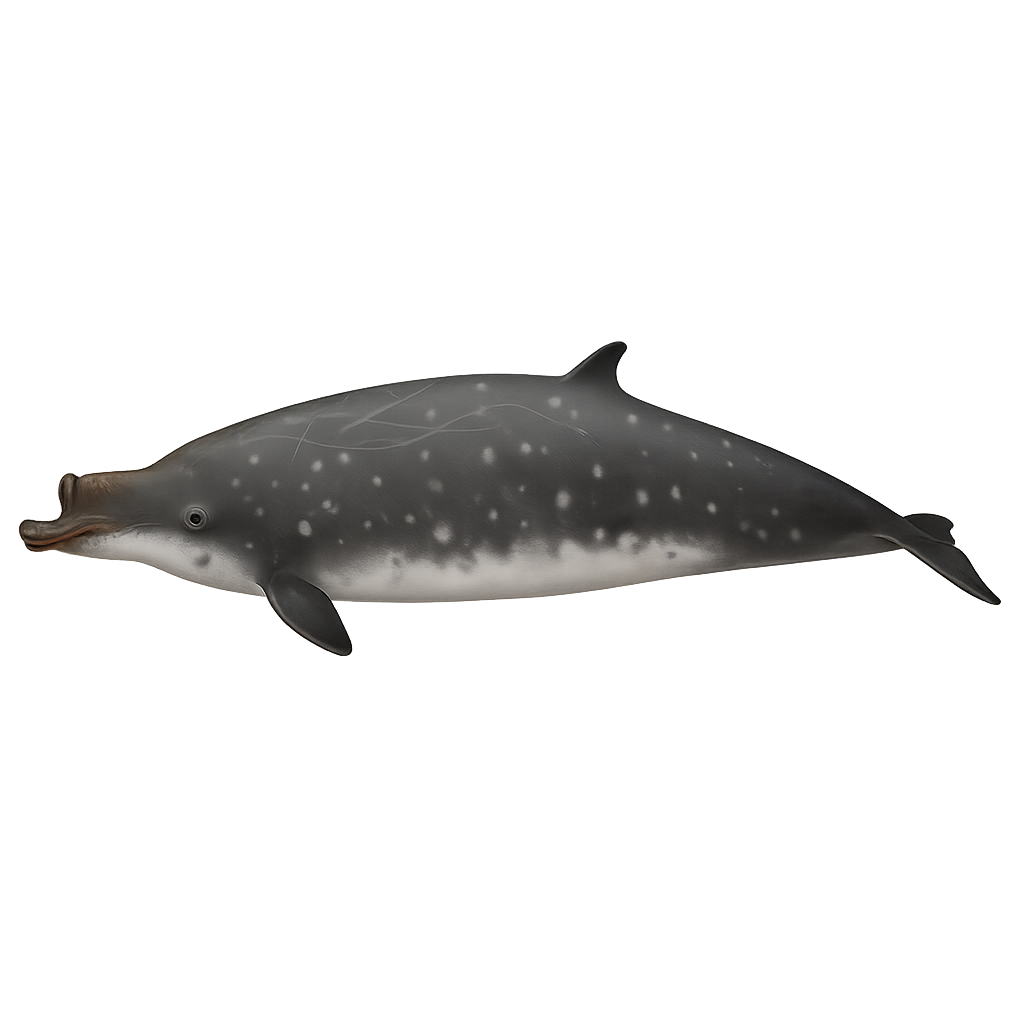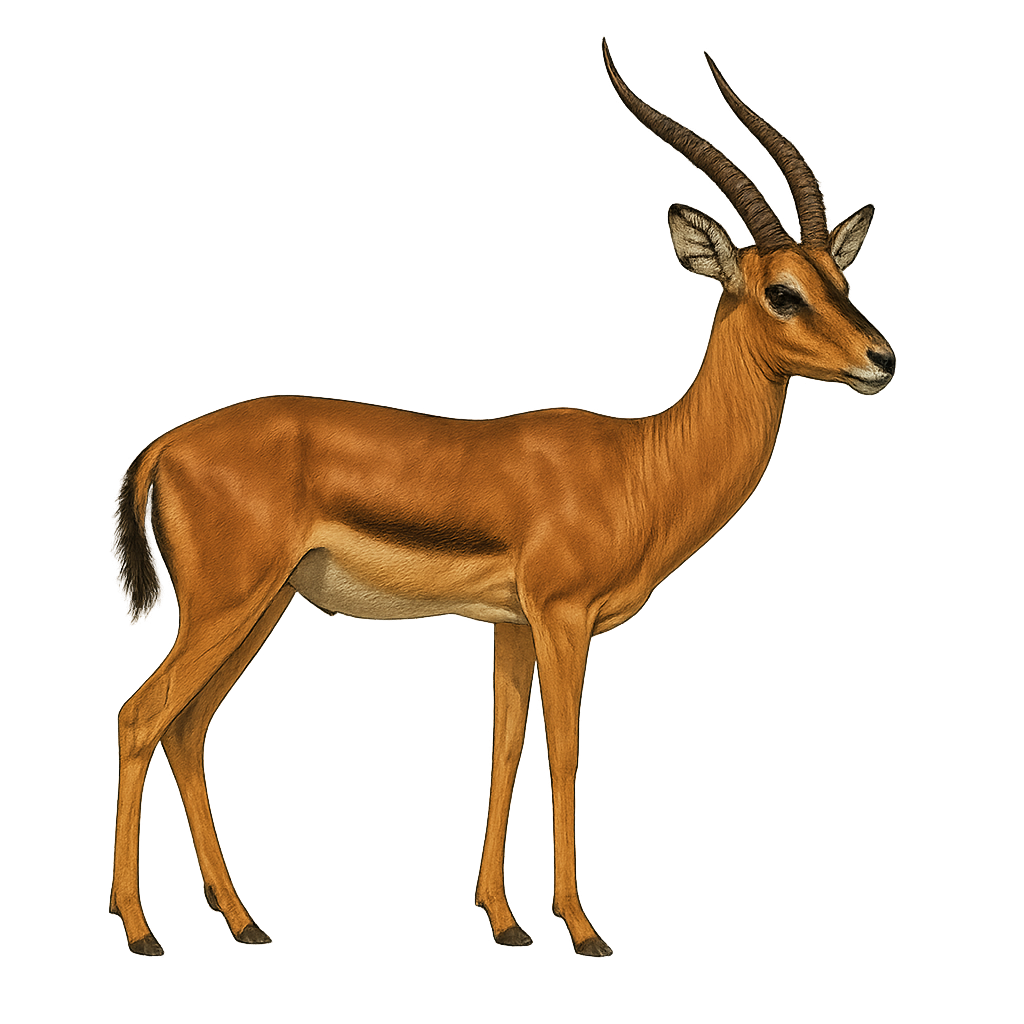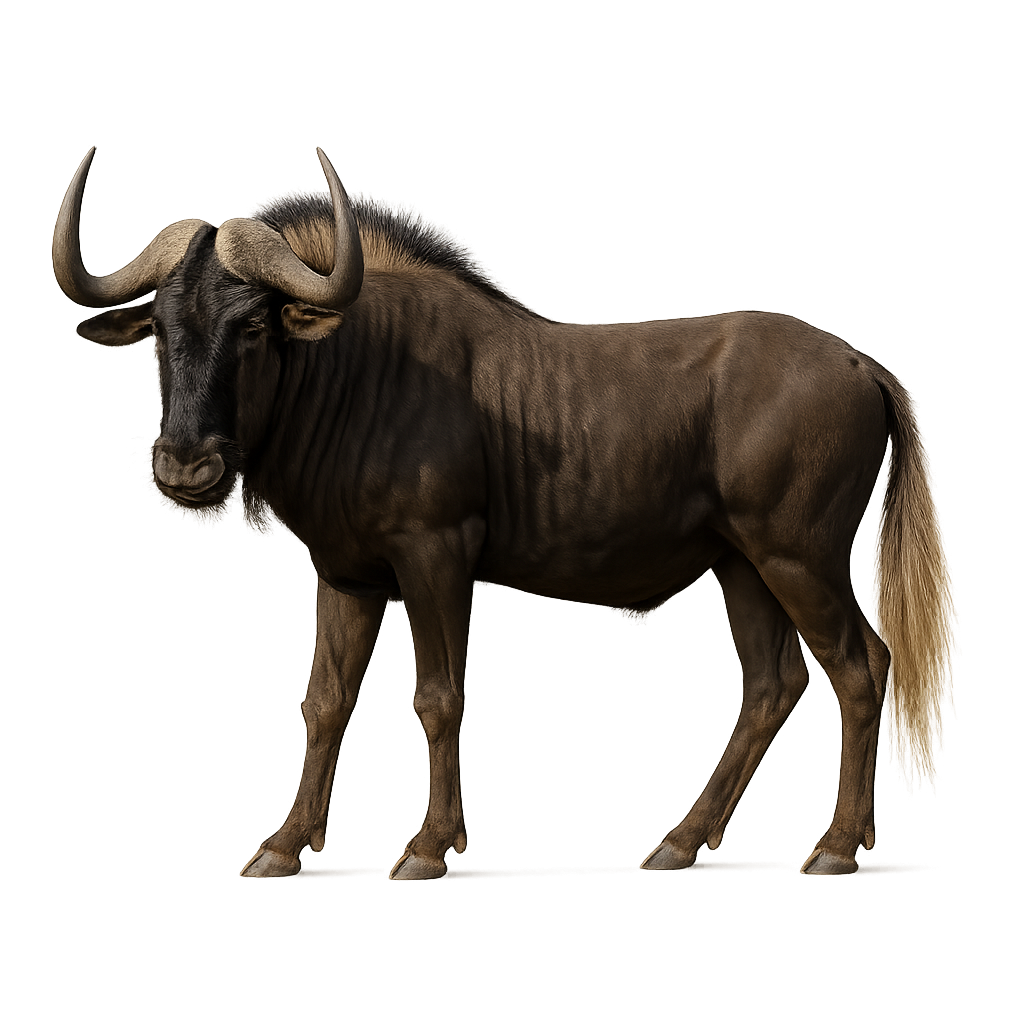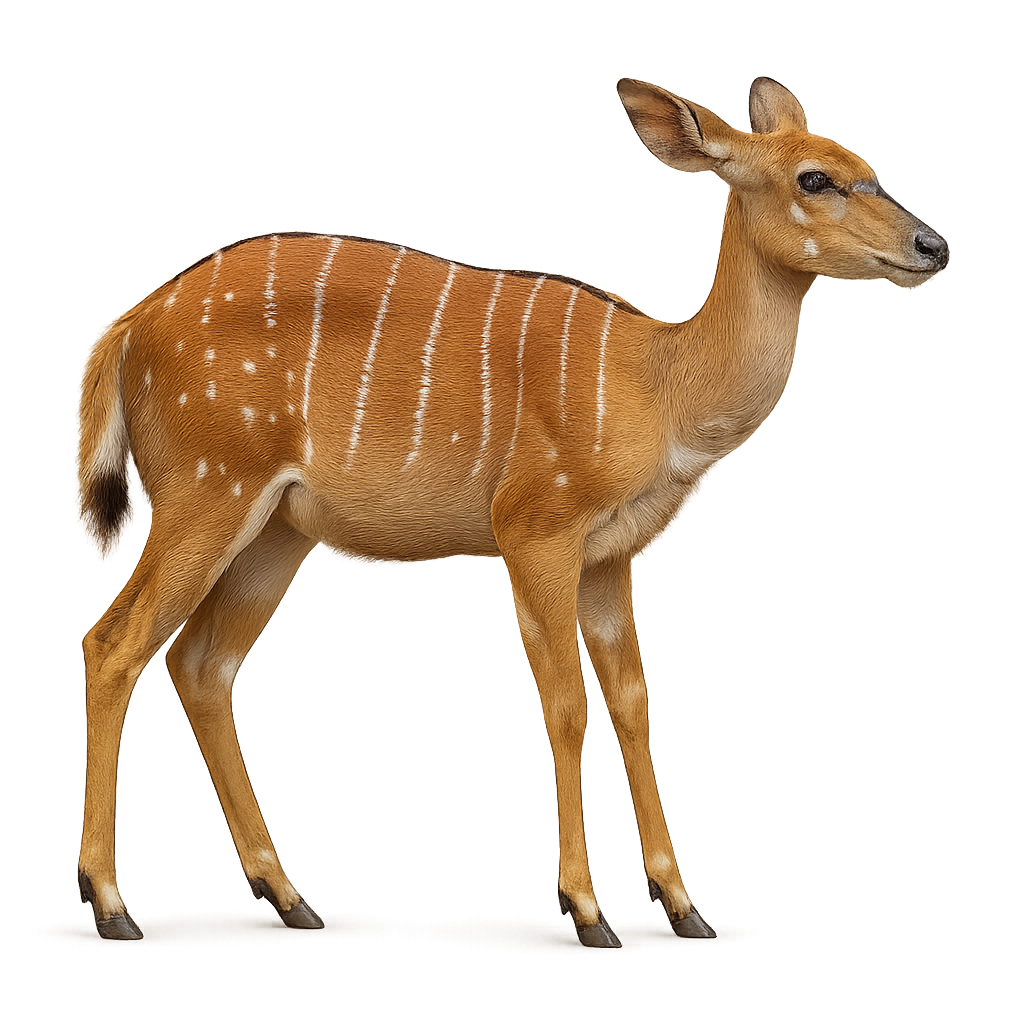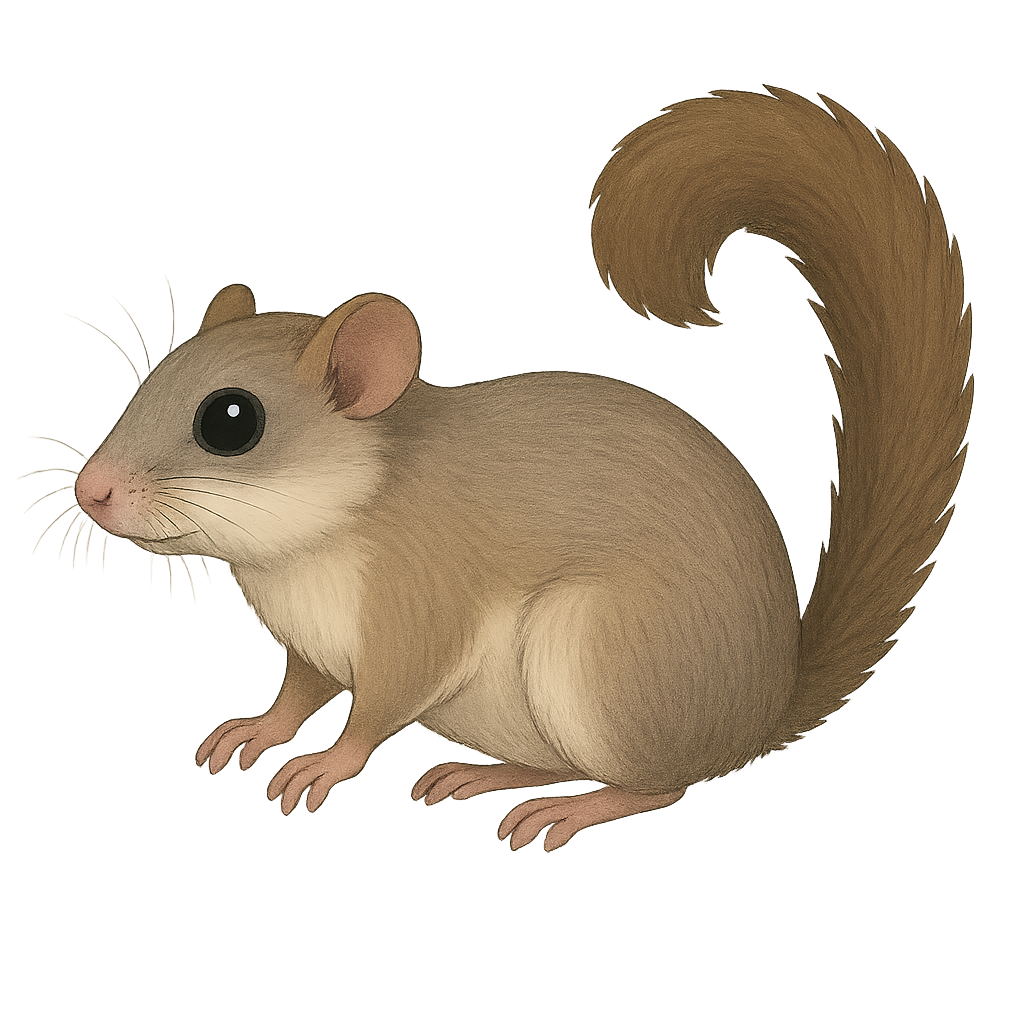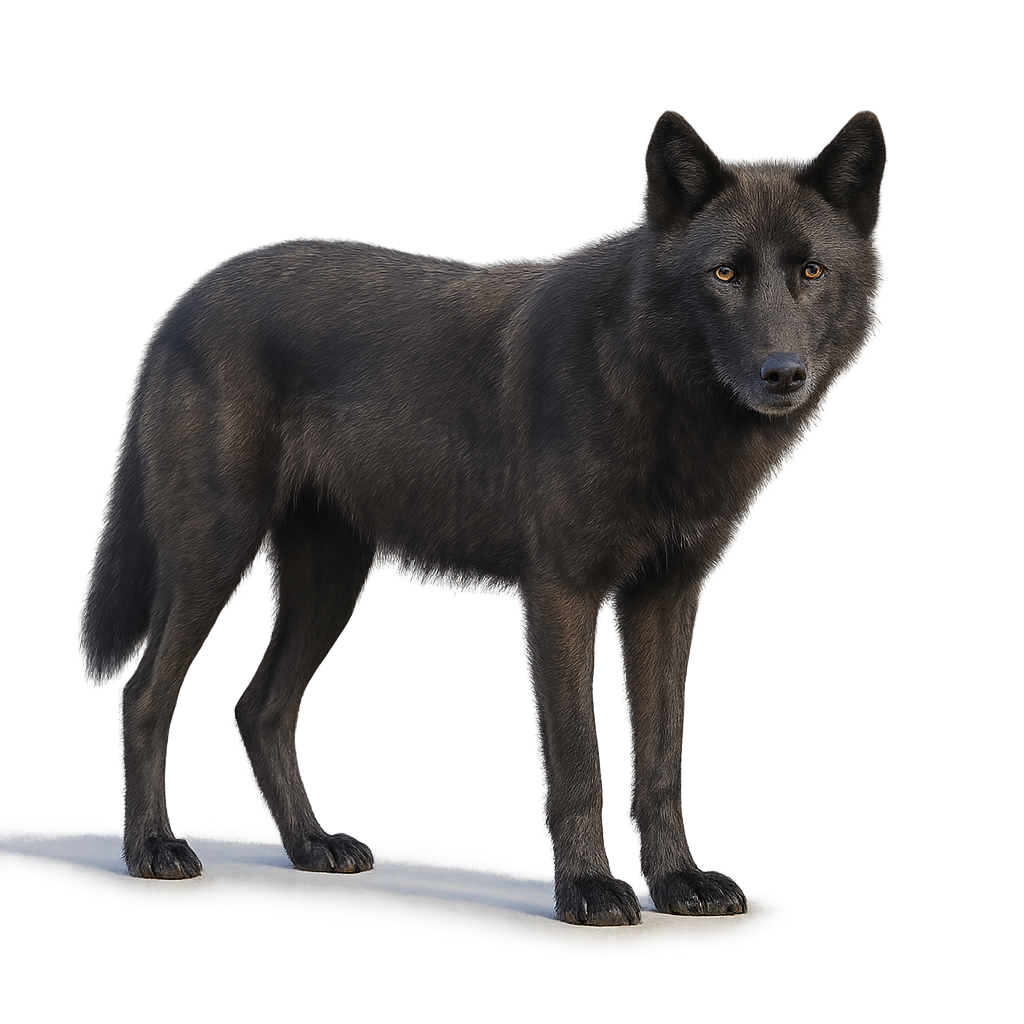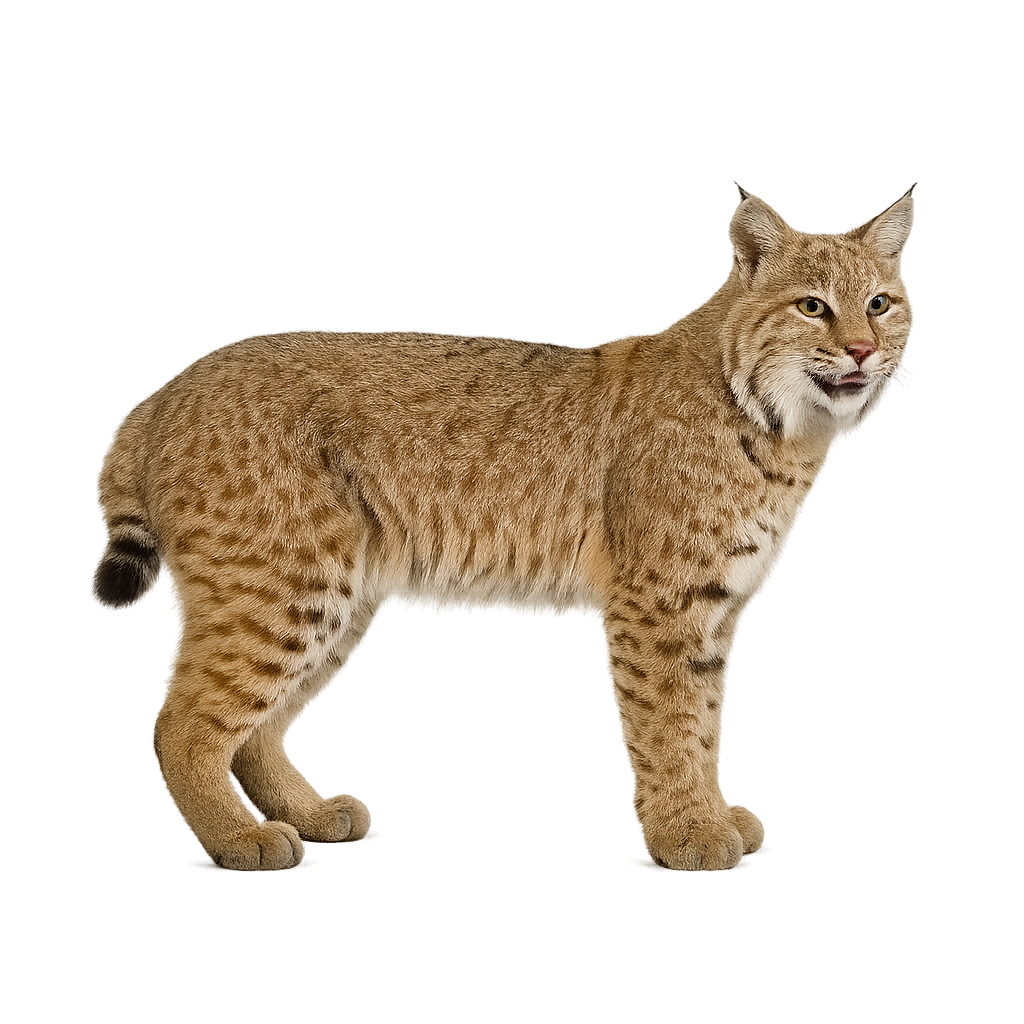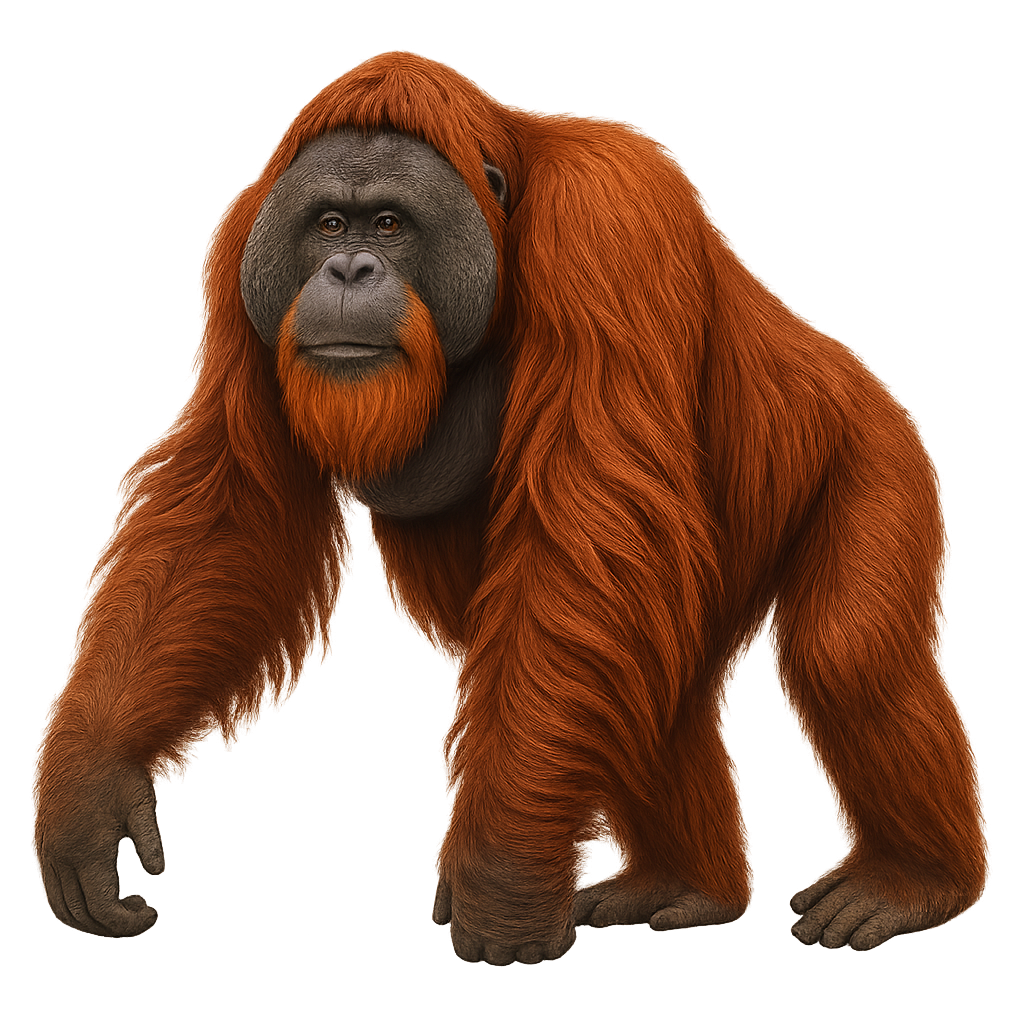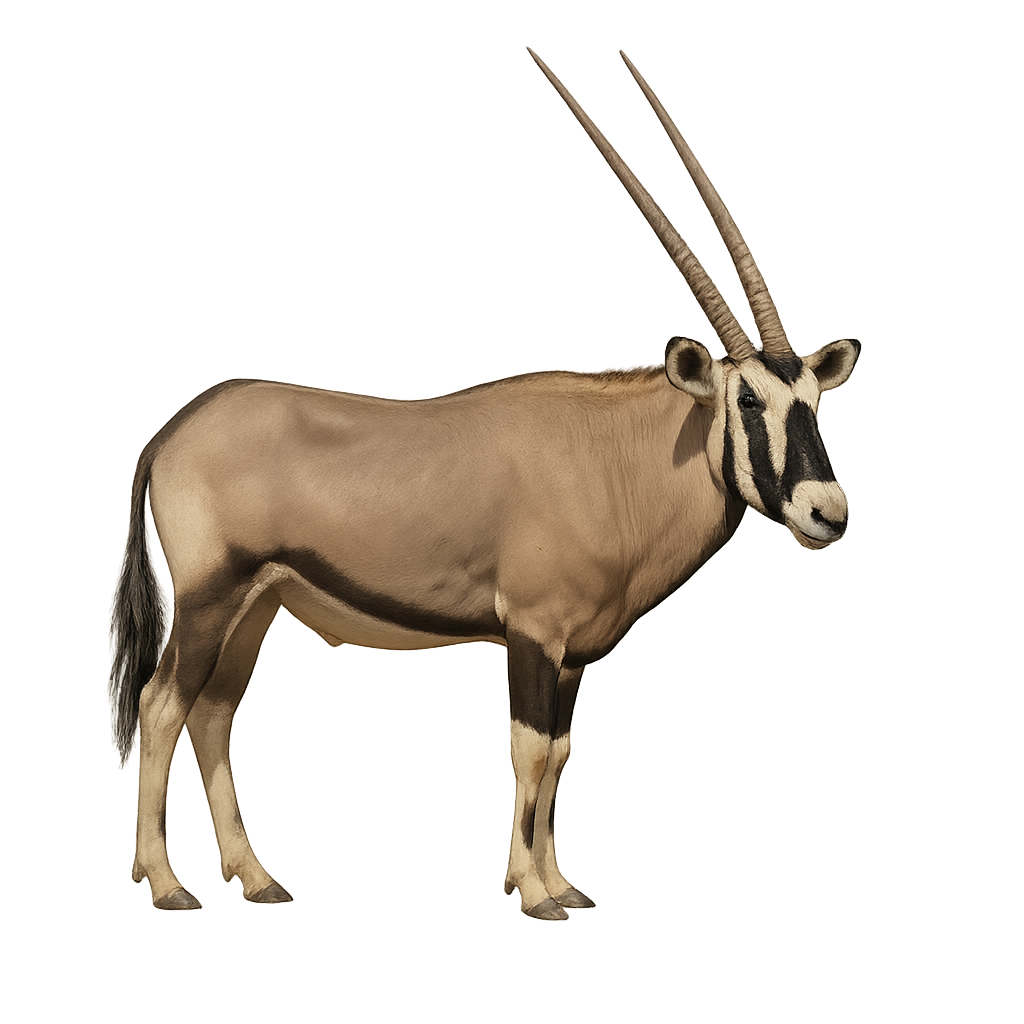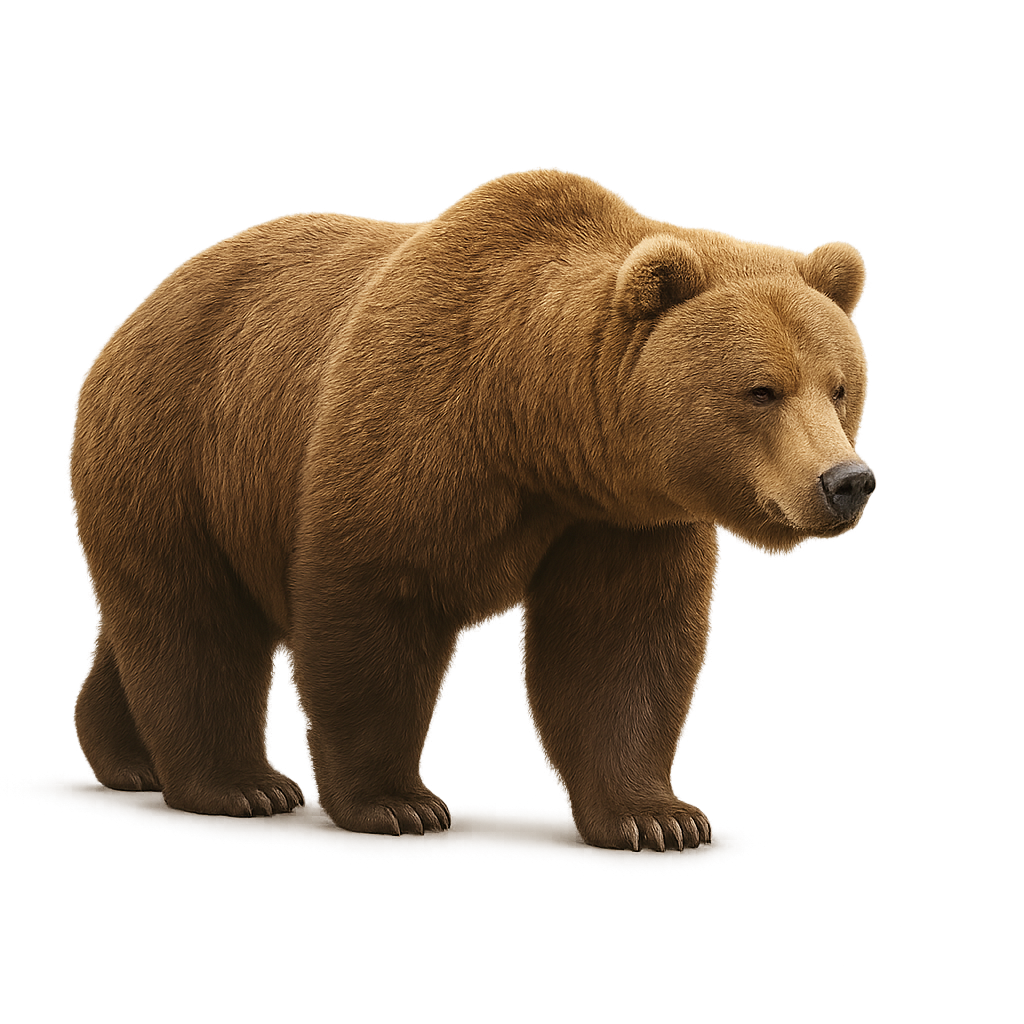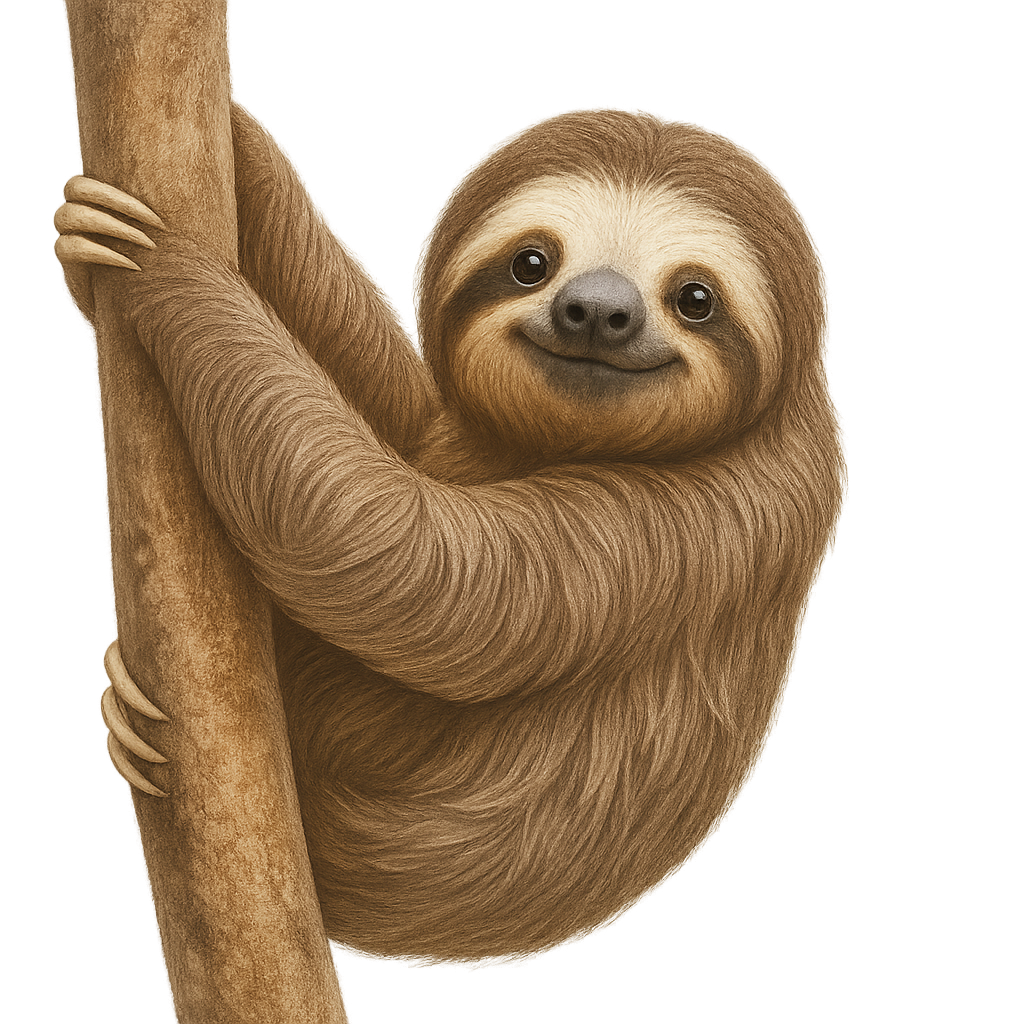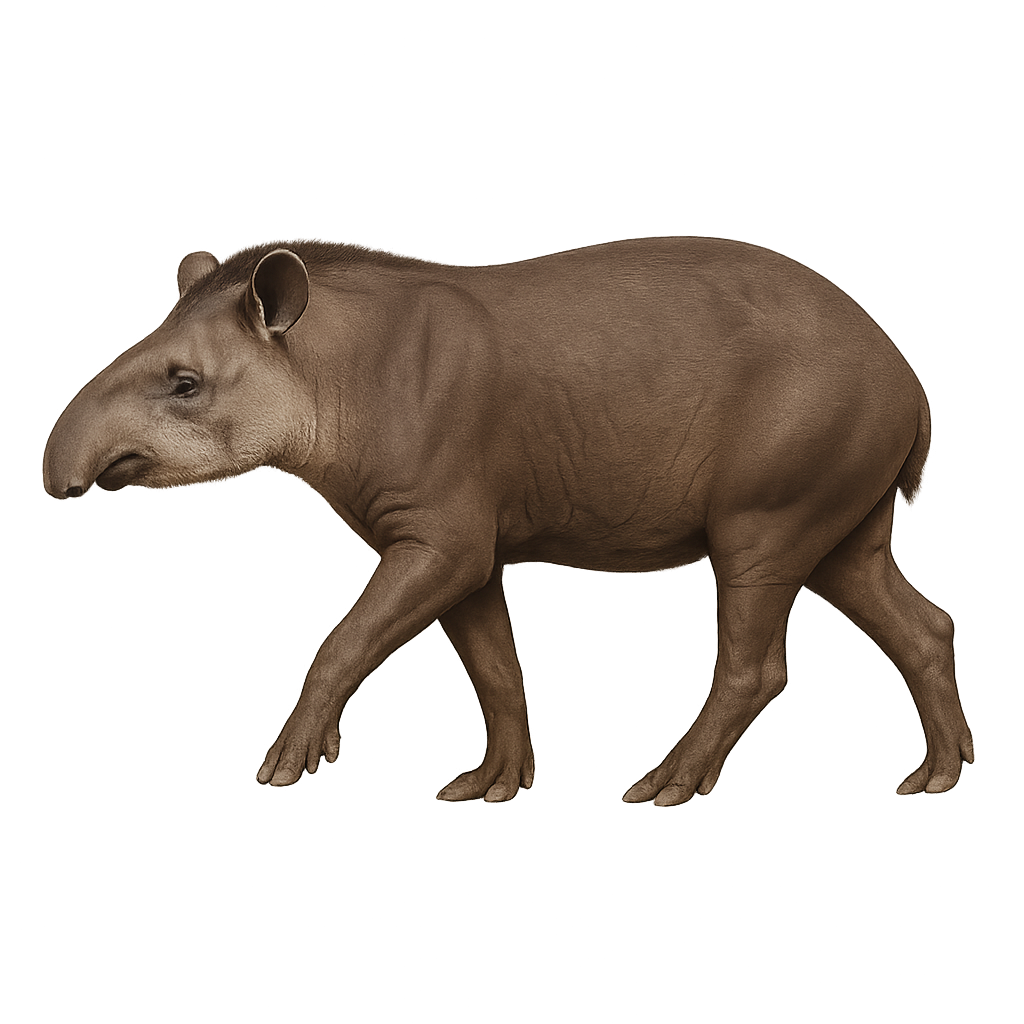Blainville's beaked whale is a little-known species of beaked whale, primarily inhabiting the deep waters of the Atlantic and Pacific Oceans. It is easily recognized by its long, narrow rostrum. This species is difficult to observe due to its deep-ocean habitat and migratory habits. The Blainville's beaked whale is still poorly studied but is threatened by pollution, ship collisions, and underwater noise.
The Blue Whale is the largest animal ever known to have existed on Earth. This impressive cetacean can grow up to 30 meters long and weigh as much as 180 tons. Its gray-blue skin and streamlined body are perfectly adapted to ocean life, and despite its enormous size, the Blue Whale primarily feeds on small marine organisms such as krill, which it consumes in large quantities. Using its massive tongue and enormous mouth, it can swallow up to 4 tons of krill in a single gulp.
Unfortunately, although once abundant, the Blue Whale is now classified as an endangered species due to commercial whaling, which has significantly reduced its population. Conservation efforts are now in place to protect this majestic creature.
The Beluga is a remarkable cetacean, easily recognizable by its immaculate white color and streamlined shape. Unlike many other dolphins, the Beluga has a rounded forehead, called a "melon," which allows it great head flexibility. What also makes the Beluga unique is its ability to produce a wide variety of sounds, which it uses to communicate and navigate in the cold waters of the Arctic seas, the North Atlantic, and rivers. It primarily feeds on fish, crustaceans, and mollusks, hunting them with its excellent echolocation ability.
Belugas live in social groups called "pods" and are known for their social behavior and interaction with humans. Despite its popularity, the Beluga is vulnerable to water pollution and climate change, which affect its natural habitats.
The binturong is an arboreal mammal with a stocky body and long prehensile tail. Its shaggy black fur and unique scent reminiscent of popcorn make it easily identifiable. Active at night, it moves slowly through the canopy of Southeast Asian rainforests in search of fruits, small animals, and eggs. Solitary and elusive, it is increasingly rare due to habitat loss.
Bongo
Cephalophus eurycerus
The Bongo is a large forest antelope native to Central Africa, recognized for its beautiful white stripes and bright orange coat. It primarily lives in dense forests, where it feeds on leaves, fruits, and bark. This antelope is usually solitary or lives in small family groups. Due to habitat loss and hunting, the Bongo is classified as a vulnerable species. Its discretion and ability to blend into its environment make it a difficult animal to spot.
The black-fronted duiker is a species of duiker, a small antelope found in the dense forests of West and Central Africa. It is easily recognizable by its distinctive black flanks and small size. This species is primarily herbivorous, feeding on fruits, leaves, and young shoots. While generally discreet and difficult to observe, it is threatened by deforestation and hunting. Its population is declining.
The Black-backed Jackal, also known as the silver-backed jackal, is a small canid native to Africa, particularly found in savannas and open grasslands. It is distinguished by its grayish coat with a black stripe running along its back, hence the name "black-backed". This coat helps it blend effectively into its environment. The Black-backed Jackal has a slender body and relatively long legs, allowing it to run at high speeds.
An opportunistic carnivore, it primarily feeds on small mammals, birds, insects, and carrion, but it can also eat fruits and plants. Although it is a solitary animal, the Black-backed Jackal can occasionally be seen in small groups, especially during the breeding season. While its status is not particularly threatened, it faces competition from other predators and the loss of its natural habitat.
The White-fronted Damalisque is a medium-sized antelope, recognizable by its reddish-brown coat and the distinctive white band that crosses its forehead, which gives it its name. It stands between 1.30 and 1.50 meters tall at the withers and weighs between 50 and 70 kg. This mammal primarily inhabits open savannas, grasslands, and semi-desert areas, preferring open terrain where it can graze on grasses, leaves, and stems. It is well adapted to heat and drought, thanks to its short coat and behavior of seeking shade during the hottest parts of the day. The White-fronted Damalisque lives in small groups, often consisting of females and young, while adult males usually live alone or in small groups. It is mainly active in the morning and late afternoon, when it is easier to feed while avoiding the heat of the day. While the species is currently in good health, it faces threats such as illegal hunting, habitat loss due to human expansion, and competition with livestock for food resources.
The Bright's Gazelle is an elegant, medium-sized antelope, recognizable for its slender proportions and long, thin legs. It stands about 75 cm at the withers and weighs between 30 and 40 kg. Its coat is generally light beige, with darker markings on the flanks and a distinctive black stripe running along its lateral line. Adult males have fine, curved horns, while females generally lack them. The Bright's Gazelle primarily inhabits the savannas and steppes of East Africa, particularly in Ethiopia and Kenya. It is herbivorous, feeding mainly on grasses, leaves, and plants. Like all gazelles, it is fast and agile, capable of running at speeds of up to 80 km/h to escape predators. Although the Bright's Gazelle is not currently endangered, it faces threats related to habitat loss, hunting, and competition with livestock for food resources.
The Blue Wildebeest is a large herbivorous antelope, easily recognizable by its massive body, imposing head, and black mane. It stands about 1.3 to 1.5 meters at the withers and typically weighs between 150 and 250 kg. Its coat is generally grayish-blue, with black markings on the head, legs, and shoulders. The Blue Wildebeest has curved horns that can reach 80 cm in length. It primarily inhabits the savannas, grasslands, and woodlands of Southern Africa, notably in South Africa, Botswana, and Namibia. Herbivorous, the Blue Wildebeest mainly feeds on grasses and low vegetation, often seen in large herds in open plains. It is commonly seen during large migrations, moving in search of food and water. While the species is not currently endangered, it faces risks related to habitat loss and hunting.
The Black Wildebeest is a large herbivorous antelope, easily recognizable by its robust build and massive head. It stands about 1.3 to 1.5 meters at the withers and weighs between 150 and 250 kg, with males generally being larger and heavier than females. Its coat is a deep black, with white markings on the throat and legs, and a black mane that distinguishes its neck. The Black Wildebeest is particularly known for its curved horns, which can reach up to 80 cm in length. It primarily inhabits the savannas and grasslands of West and Southern Africa, notably in Senegal, Namibia, and Botswana. Herbivorous, it primarily feeds on grasses and other herbaceous vegetation. The Black Wildebeest often lives in large groups, which helps protect it from predators. While the species is not endangered, it is threatened by habitat loss and climate change, which alters its living conditions.
The bottlenose dolphin is one of the most well-known and widely distributed dolphin species across warm and temperate seas. It is easily recognizable by its 'bottle-shaped' rostrum and dynamic social behavior. Highly intelligent, it lives in social groups called 'pods,' and its communication is varied and sophisticated. The bottlenose dolphin primarily feeds on fish and squid, often using group hunting techniques. Although not currently threatened, it is sometimes affected by marine pollution and accidental captures.
The Hartebeest is a medium-sized antelope, easily recognizable by its large lyre-shaped horns and distinctive coat. It stands about 1.1 to 1.3 meters tall at the shoulder, with a weight ranging from 90 to 150 kg. Its coat is generally reddish-brown, with characteristic white markings on the belly, legs, and around the eyes, and a darker coat on the back. The Hartebeest primarily inhabits savannas, grasslands, and grassy areas in East and Southern Africa, notably in Kenya, Tanzania, South Africa, and Namibia. Herbivorous, it primarily feeds on grasses, leaves, and young shoots. It lives in social groups, usually composed of females and young, while adult males often live alone or in small groups. While the Hartebeest is not currently endangered, it faces threats such as habitat loss, hunting, and disease.
The Dormouse with a Bushy Tail is a small nocturnal rodent, easily recognizable by its large bushy tail, which is one of its distinctive features. It measures about 20 to 25 cm in length, with a tail of around 10 to 15 cm, and weighs between 50 and 150 g. Its coat is generally gray or brown, with a lighter shade on the belly, and it has large round ears and bright eyes. The Dormouse with a Bushy Tail primarily lives in forests, hedgerows, and gardens, where it feeds on fruits, seeds, nuts, as well as small creatures like insects. It is mainly active at night, taking refuge in tree holes or burrows during the day. This rodent hibernates during the winter, entering a state of torpor for several months, which allows it to survive the cold temperatures. While the species is not currently endangered, it faces threats from deforestation and the reduction of its natural habitat.
The Coastal Wolf is a subspecies of the gray wolf primarily found along the coasts of Alaska and the North Pacific, as well as on certain islands. This wolf is adapted to its coastal environment, where it primarily hunts marine prey such as seals, fish, and seabirds. It measures about 1.3 to 1.5 meters in length, with a tail of about 30 to 40 cm, and weighs between 30 and 50 kg. Its coat is typically gray, brown, or black, with lighter shades on the belly and a thick mane around the neck. The Coastal Wolf is a social predator that lives in family groups and hunts in packs, often in areas close to water or on beaches. In addition to marine prey, it may also feed on deer, bears, and small mammals. While this subspecies is less widespread than others, it is well adapted to its environment and plays an important role in maintaining the balance of coastal ecosystems. However, it is threatened by habitat loss, human disturbances, and hunting.
The Bobcat is a medium-sized cat native to North America, where it is widespread, particularly in the United States, Canada, and Mexico. It measures about 80 to 110 cm in length, with a short tail of 10 to 15 cm, and weighs between 8 and 14 kg, although some males can reach 20 kg. Its coat is typically tawny or grayish with dark spots, and it has black tufts of fur on its ears, a characteristic feature of this species. The Bobcat is an excellent solitary hunter, primarily feeding on hares, rabbits, as well as birds and small mammals. It is particularly known for its ability to hunt in a variety of environments, ranging from dense forests to more open regions. This predator uses its great stealth to approach its prey before launching a quick attack. While the Bobcat remains relatively stable in terms of population, it is threatened by habitat loss and illegal hunting in some areas.
The Black-faced macaque is a primate native to the islands of Sulawesi in Indonesia. It is recognizable by its distinctive black face and gray or brown fur. This macaque is primarily frugivorous but also feeds on insects and small animals. It lives in complex social groups, often near rivers and tropical forests. The species is threatened by deforestation and the loss of its natural habitat.
The Bornean orangutan is a large primate, measuring about 1.2 to 1.5 meters in height and weighing between 40 and 90 kg. It is easily recognized by its reddish fur and long arms, which allow it to move effortlessly through the trees. This species is native to the island of Borneo, where it primarily inhabits tropical forests. The Bornean orangutan is an herbivore, feeding mainly on fruits, leaves, bark, and small insects. It is a solitary animal, with very discreet behaviors and a great ability to adapt to its environment. Due to deforestation, illegal hunting, and the loss of its natural habitat, this species is classified as endangered.
The Beisa Oryx is a large antelope found primarily in the arid and semi-desert regions of East Africa, particularly in Somalia, Ethiopia, and Kenya. It stands between 1.2 and 1.5 meters at the shoulder and weighs around 100 to 150 kg. The Beisa Oryx is easily recognized by its long, straight horns, which can reach up to 1 meter in length. Its coat is sandy-colored, with black markings on the flanks, legs, and around the eyes, helping it blend into its desert environment. This herbivore feeds primarily on bushes, grasses, and succulent plants. Although the Beisa Oryx is capable of tolerating extremely high temperatures, it is also well adapted to cover large distances in search of food and water. This species is currently listed as "near threatened" due to habitat loss and hunting.
The Brown Bear is one of the largest terrestrial carnivores, measuring between 1.5 and 2.5 meters in length and weighing between 100 and 800 kg, depending on the subspecies and habitat conditions. Its coat ranges from light brown to dark brown, and it is often denser during the winter. The Brown Bear primarily lives in forests, mountains, and Arctic regions, but can also be found in tundra and prairie areas. It is omnivorous, feeding on fruits, roots, small mammals, fish, and even carrion. The Brown Bear is also an excellent swimmer and climber. Due to hunting, habitat loss, and conflicts with humans, some subspecies of Brown Bears are threatened or endangered.
The Common Sloth is an arboreal mammal native to the tropical forests of Central and South America, particularly in South America, from Costa Rica to Brazil. It measures between 50 and 70 cm in length, with a tail of 4 to 6 cm, and weighs between 4 and 8 kg. Its fur is long and thick, gray-brown in color, with lighter and sometimes greenish patches due to algae growing on its hair. The Common Sloth primarily feeds on leaves, fruits, and flowers, which it eats very slowly. It is known for its extreme slowness, moving at a speed of 0.03 km/h, making it one of the slowest animals in the world. This behavior is due to its slow metabolism and a diet that is low in calories. Although the population of common sloths is not immediately threatened, they are vulnerable to habitat loss and human disturbances.
The Bat-eared Fox is a small carnivore primarily found in the savannas and semi-arid areas of Southern Africa. It measures about 40 to 50 cm in length, with a tail of 25 to 30 cm, and weighs between 1 and 2 kg. Its fur is primarily light gray or beige, with dark markings on the legs and face. What distinguishes it most are its large ears, which resemble those of a bat, and which are highly sensitive, allowing it to locate its prey, primarily insects, small mammals, and birds, through its acute hearing. The Bat-eared Fox is a nocturnal and highly social animal, often living in small groups. While its population remains relatively stable, it can be threatened by habitat destruction and hunting.
The Black Rhinoceros is a large species of rhinoceros primarily found in East and Southern Africa, notably in Kenya, Tanzania, Namibia, and South Africa. It measures about 3.5 to 4 meters in length, with a tail of 50 to 70 cm, and weighs between 800 and 1,400 kg. This rhinoceros is distinguished by its black skin (although some specimens may be gray) and its two horns located on its nose. Unlike the White Rhinoceros, it has a more pointed mouth, adapted for eating bushes and trees. The Black Rhinoceros is primarily herbivorous, feeding on leaves, fruits, twigs, and tree bark. While its population has long been threatened by poaching and habitat loss, conservation efforts have helped stabilize its population, although it remains critically endangered.
The Baird's Tapir is a species of tapir found primarily in the tropical forests of Central America, notably in Guatemala, Honduras, Costa Rica, and Nicaragua. It typically measures about 2 to 2.5 meters in length, with a short tail of 20 to 30 cm, and weighs between 200 and 300 kg. Its fur is predominantly black or dark brown, with lighter areas on its legs and ears. The Baird's Tapir has a long, flexible snout that allows it to grasp leaves, fruits, branches, and grasses. While it is an excellent swimmer and often spends time in water, it primarily lives in dense, humid forests. This species is threatened by deforestation, illegal hunting, and habitat loss, which has led to a decline in its population.
The Brazilian tapir, also known as the Amazonian tapir, is a large herbivorous mammal that lives in the humid tropical forests and wetland areas of the Amazon basin. It is easily recognized by its massive body, short legs, and elongated trunk-like nose, which it uses to grasp branches and leaves. The Brazilian tapir is primarily nocturnal and solitary, feeding mainly on fruits, leaves, and roots. While rather calm, it is an excellent swimmer and often spends time in water to cool off or move around. This tapir is currently listed as vulnerable due to habitat loss and hunting.
The Bengal Tiger is a subspecies of tiger found primarily in the forests of India, Bangladesh, Nepal, Bhutan, and Myanmar. It typically measures between 2.7 and 3.1 meters in length, with a tail of 1 to 1.2 meters, and weighs between 200 and 260 kg. Its fur is yellow-orange with distinct black stripes, and its impressive size makes it one of the largest and most powerful tiger subspecies. The Bengal Tiger is a solitary and territorial predator, primarily feeding on large herbivores such as deer, wild boars, and buffalo. Although its population is declining, the Bengal Tiger is one of the best-protected tiger subspecies, with active conservation efforts in wildlife reserves and national parks. It is still threatened by habitat loss, poaching, and human-wildlife conflicts.


